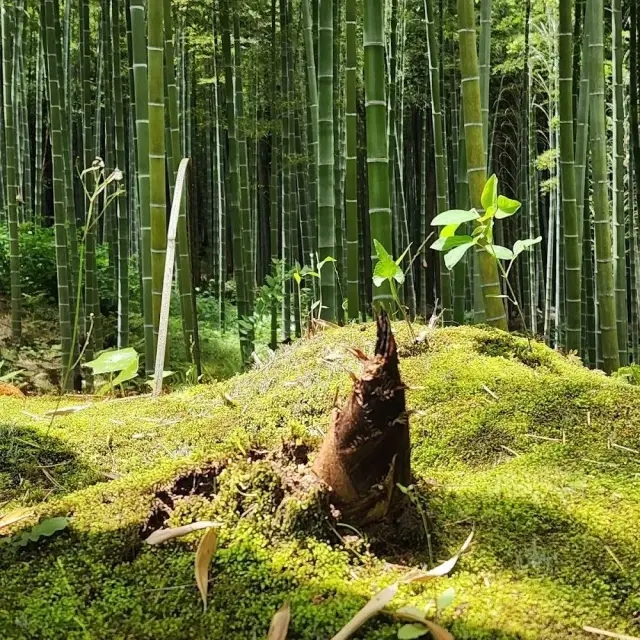https://www.dekitabi.com/itinerary/arashiyama-south-temples-tour
Japan’s rich cultural heritage and breathtaking natural landscapes make it a top destination for travelers worldwide. One area that encapsulates the essence of Japan’s beauty and history is Arashiyama in Kyoto. This enchanting district offers visitors a chance to explore iconic sites such as Togetsukyo Bridge, the Arashiyama Bamboo Grove, Kegonji Temple, Saihoji Temple, and Jizo-in. Each of these locations holds unique historical and cultural significance, making Arashiyama a must-visit for any traveler to Japan.
Togetsukyo Bridge: A Symbol of Arashiyama

https://www.dekitabi.com/attraction/togetsukyo-bridge
Togetsukyo Bridge, often referred to as the “Moon Crossing Bridge,” is a landmark of Arashiyama. Spanning the Katsura River, this wooden bridge offers stunning views of the surrounding mountains and cherry blossoms in the spring. The bridge’s history dates back to the Heian period when it was first constructed. Today, it stands as a symbol of the area, drawing tourists year-round.
Walking across Togetsukyo Bridge, you can see the harmony between nature and architecture, a common theme in Japanese design. The bridge is particularly popular during the cherry blossom season and autumn when the foliage transforms into vibrant shades of red and orange. For photographers and nature enthusiasts, this spot provides endless opportunities to capture the beauty of Japan’s changing seasons.
Arashiyama Bamboo Grove: A Pathway to Tranquility

https://www.dekitabi.com/attraction/arashiyama-bamboo-forest
Just a short walk from Togetsukyo Bridge lies the Arashiyama Bamboo Grove, a place that feels almost otherworldly. As you step into the grove, towering bamboo stalks surround you, creating a canopy that filters the sunlight into soft, green hues. The bamboo grove is one of Kyoto’s most photographed and visited sites, offering a serene escape from the city’s hustle and bustle.
The path through the bamboo grove is well-maintained, making it accessible for visitors of all ages. Walking through the grove, you’ll hear the rustling of bamboo leaves and the gentle creaking of the tall stalks swaying in the breeze. This tranquil environment invites reflection and meditation, providing a unique experience that connects you with nature’s elegance.
Kegonji Temple: The Temple of the Golden Bell

https://www.dekitabi.com/attraction/suzumushi-temple
Kegonji Temple, also known as Suzumushi-dera or the Temple of the Singing Cricket, is another captivating destination in Arashiyama. The temple is renowned for its garden, where thousands of bell crickets (suzumushi) serenade visitors with their distinctive chirping. This unique feature makes Kegonji Temple a charming spot to visit, especially in the summer and autumn when the crickets are most active.
Founded in the early 8th century, Kegonji Temple has a rich history intertwined with Japanese Buddhism. The temple’s main hall houses a beautiful statue of Kannon, the Goddess of Mercy, which attracts pilgrims seeking blessings and spiritual guidance. The peaceful atmosphere and melodic sounds of the crickets create a perfect setting for contemplation and relaxation.
Saihoji Temple: The Moss Temple

https://www.dekitabi.com/attraction/saihoji-temple
Saihoji Temple, commonly known as Kokedera or the Moss Temple, is a UNESCO World Heritage Site famous for its exquisite moss garden. This temple, founded in the 8th century by the monk Gyoki, later became a center for Zen Buddhism under the guidance of the renowned monk Muso Soseki. The temple’s garden, covered in over 120 varieties of moss, is a masterpiece of landscaping and tranquility.
Visitors to Saihoji Temple must make reservations in advance, as the temple limits the number of daily visitors to preserve the delicate moss garden. The visit typically begins with a brief Zen meditation session, followed by copying sutras (shakyo) before entering the garden. This practice allows visitors to prepare their minds for the serenity and beauty they are about to experience.
The moss garden, with its lush, green carpets and carefully placed stones, invites a deep appreciation for nature’s subtle beauty. The garden is particularly enchanting after rainfall when the moss glistens with moisture, creating a magical atmosphere.
Jizo-in: The Bamboo Temple

https://www.dekitabi.com/attraction/jizoin-temple-kyoto
Jizo-in, also known as the Bamboo Temple, is a hidden gem in Arashiyama. This small temple is dedicated to Jizo Bosatsu, a bodhisattva revered for his compassion and protection of children and travelers. The temple’s peaceful surroundings and intimate atmosphere make it a perfect spot for those seeking a quieter, more personal experience.
One of the highlights of Jizo-in is its beautiful bamboo grove, similar to the more famous Arashiyama Bamboo Grove but less crowded. The temple grounds are also adorned with stone lanterns, moss-covered statues, and serene pathways that invite leisurely exploration. The tranquility of Jizo-in provides a welcome retreat from the more bustling tourist spots in Arashiyama.
Conclusion
Arashiyama is a treasure trove of cultural and natural wonders, offering visitors a glimpse into the timeless beauty of Japan. From the iconic Togetsukyo Bridge and the enchanting Arashiyama Bamboo Grove to the historic temples of Kegonji, Saihoji, and Jizo-in, each location provides a unique and memorable experience. Whether you’re seeking spiritual enlightenment, photographic inspiration, or simply a peaceful retreat, Arashiyama has something to offer every traveler.
As you plan your visit to Japan, make sure to include Arashiyama on your itinerary. The blend of history, culture, and natural beauty in this area will leave you with lasting memories and a deeper appreciation for the wonders of Japan.


Leave a Reply